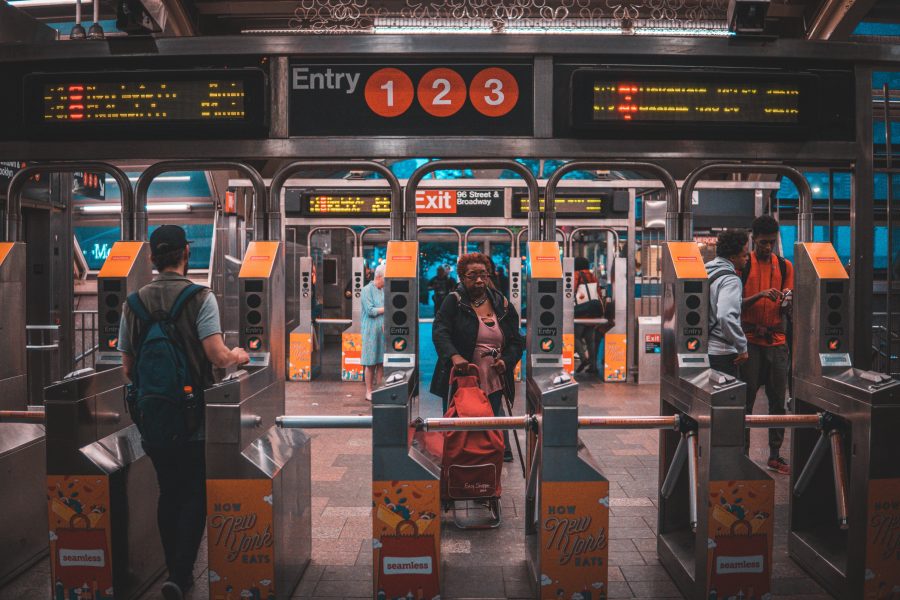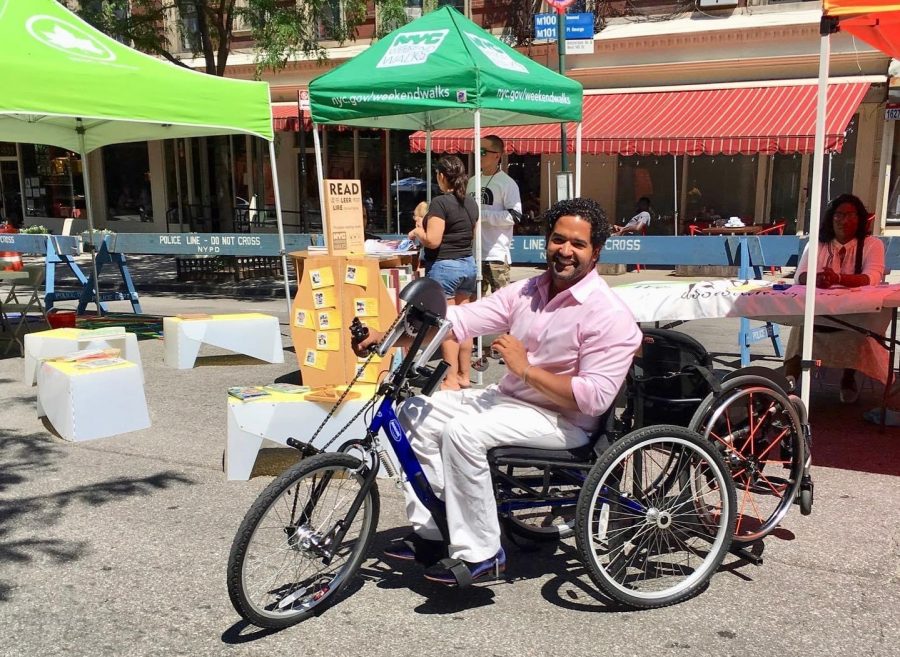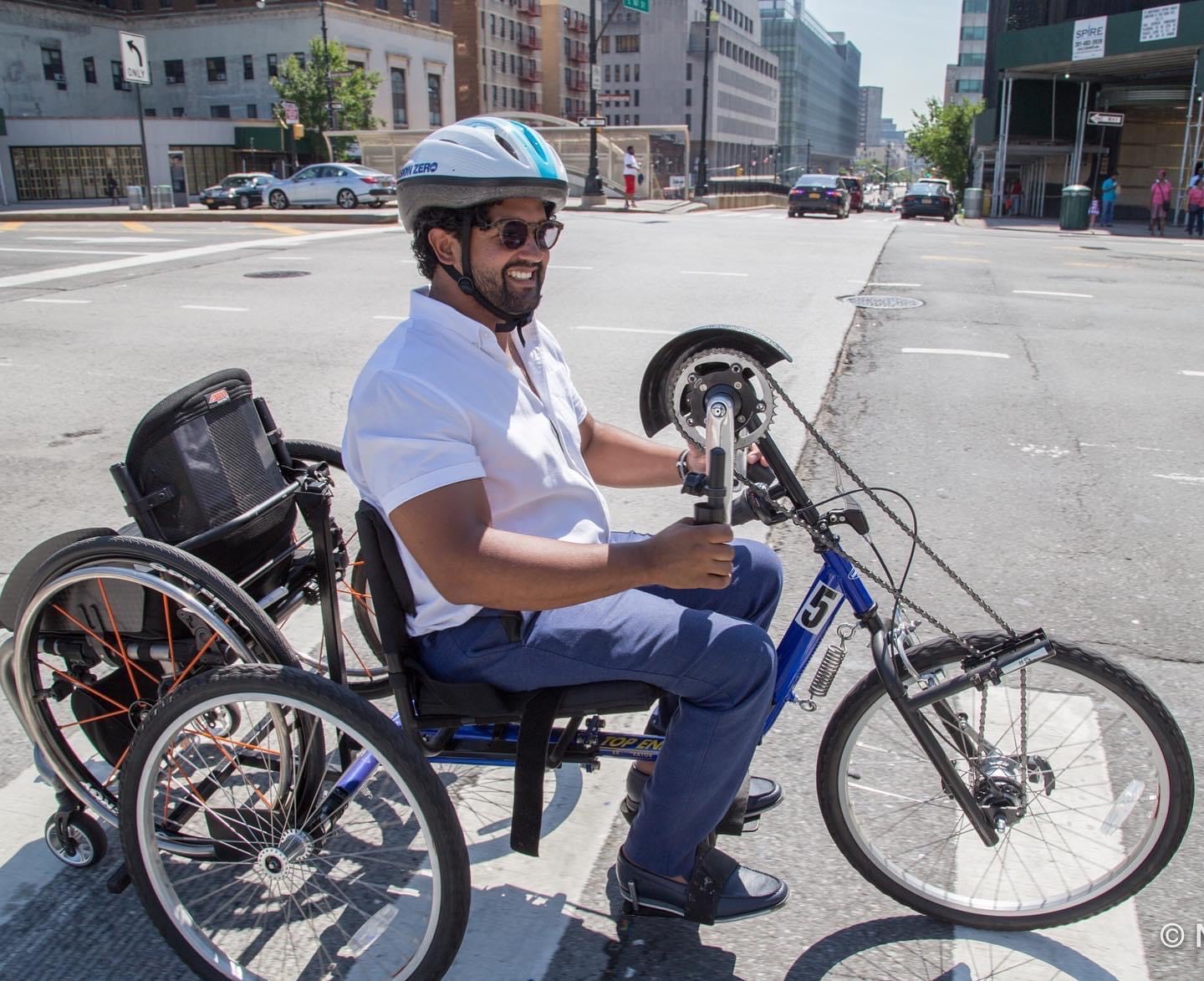11 min. read
Quemuel Arroyo is the first Chief Accessibility Officer at the Metropolitan Transportation Authority (MTA) of New York State. Prior to joining the MTA, Arroyo served as Interim President and Global Head of Community at Charge, a micromobility charging company. Previous roles also include serving as Chief Accessibility Specialist at the NYC Department of Transportation
What has been your path to your current role at the MTA and have you worked to redefine what accessibility means?
I am a New Yorker with a disability, acquired during downhill mountain biking 14 years ago, and ever since I’ve become really passionate about advocating for people that are more silent or communities that are unheard due to our societal and physical barriers.
For 6 years I served as the first chief accessibility specialist at the NYC Department of Transportation. I came to the DOT to work towards redefining what access looked like for them. I did not see myself reflected in their brochures, their materials, the community engagement and I really thought that someone should do something about that. After some good conversations with the commissioner at the time, Polly Trottenberg, we decided that we really were aligned in terms of who the stakeholders needed to be.
Still today, too many organisations think of access as getting people from their home to a hospital, or to their doctor’s appointment, and that does not sit well with me. I am a young adult, a New Yorker who zig zags throughout the city using all modes of transportation. Sometimes I cycle, sometimes I ride the train, or take the bus or a cab. I do all this as a New Yorker with a disability who uses a wheelchair to get around. Seeing more people with disabilities able to navigate our transport systems more comfortably will show it can truly support the quality of life, the lifestyle that they want, in a way they define for themselves.
I want to provide people the opportunity to choose what their days look like, what their commute looks like. New Yorkers of all abilities should have the tools that they need to leave their house on their time and commute independently to wherever they want to go. Some will go to school, some will go to work, some will go to the hospital, but many will also go to a bar at the end of the day to have a drink, share a great time with their family and loved ones. So that’s my definition of access, giving people the tools that they need to be independently successful.
What are some of the biggest priorities to start making steps towards greater inclusivity in public transportation ?
The Metropolitan Transit Authority is the largest transportation network in all of North America, and one of the three largest in the world. Prior to COVID-19, we moved north of 6.5 million people a day on a public transportation system, and over 2 million on buses and railroads. We have the ability to change lives and to provide access for people that are not currently moving around in our public transportation system. In NYC alone, we have more than 1 million New Yorkers who self identify as persons with disability. We see about 60 million tourists every year in NYC, and about 10 million of those are persons with disabilities, so it’s my job to get them through our arteries, the lifeline of the city that is our transportation system, so that they can enjoy all that it has to offer.

That alone drew me to the MTA, but also similarly to my time at the DOT, I was enthusiastic about having the ability to redefine access, and engage the key stakeholders that are needed for that. For way too long the conversation has been galvanised by people with mobility disabilities like myself, who believe that access means vertical access in or out of our system. I don’t believe that. There’s so many persons with disabilities who have needs that go beyond an elevator, an escalator or a ramp. A lot of disabilities that we see in that 1 million number, are people that have cognitive disabilities, or people with low vision. I am very particular about disassociating accessibility with certain kinds of disabilities. So many other people are part of my world. For example, there are 130 000 births on average every year in NYC. In my mind that is 130 000 strollers that need accessible transport. There are also 1.5 million New Yorkers over the age of 65. They are part of my stakeholders too, and I want to provide them with the support that they need to move around independently.
One of my priorities is providing effective communication, and what that means is any information that you and I receive audibly or visually, I want to provide it in the inverse. We have a lot of access to information via our iPhones. However, if a person is hard of hearing or blind, they don’t have the same access that we have. So we need to provide those digital curb cuts, that digital access, that can allow everybody to access information in an equitable fashion.
Of course, vertical access is very important, Our transit systems is 117 years old, it’s one of the oldest in the world, so a priority for me is developing a long term plan that will capture what vertical access will look like throughout the system in perpetuity, until we get to full accessibility to the maximum extent that is feasible. I want to set that commitment on paper, so there is no ambiguity around what is the MTA doing, what the plan is, how are we investing, or what does it mean when we say we want to redesign the system so it is more accessible.
Lastly, I really want to open ourselves up to engage with people that we haven’t probably heard of in the past. We need to revert back to grassroots efforts to engage with community organisations, and differentiate groups that are atypical players, for example parents with strollers. So these are my top priorities: engaging, committing in a very transparent way, and redefining access.
How do you see the role of universal design, and designing for those with the most needs as a way to increase the wellbeing of the broader population?
A point I often bring up is the amount of damage DaVinci did with the Vitruvian man. To this day, all of our programs, services, facilities, prototypes, everything that we design is built for a 6 foot able-bodied white man. It’s crazy to think that people believe that that is the prototype of the human kind. I like to think of the stakeholders that I am servicing as non-conforming bodies, because if I design something for that non-conforming prototypical form, then it will work for all typologies. We need to speak to those characteristics of universal design and design for the person with the highest needs, which allows you to design for everyone.
You played a role in the Summer Streets program activations that enabled people to try out handcycles. How do you see greater access to cycling as a tool for empowering people with limited mobility, and what are some barriers to enabling it?
We need to bifurcate from the belief that adaptive cycling is any different than cycling in general. You see a lot of adaptive cycling provided for a loop system or recreational system. I used to ride a hand cycle when I was commuting to and from work in the summers. I was however only able to do that because I worked with a bike manufacturer that designed a bar for me to bring my wheelchair and they said no one had ever asked for that.
There is really not one person to blame here. If I speak to Citi Bike or any other bicycle share operators, they will say that the demand isn’t there, that the disability community isn’t asking for that. I usually respond that they’re not speaking to the right people. On the flip side of that, people with disabilities must come out and say that they are interested, willing to try this mode of transport if it is affordable and available.
Micro-mobility companies like Bird are starting to provide adaptive pieces that can attach to a wheelchair, becoming an e-scooter type of system. I would love to see more of that, because that’s going to invite people with disabilities to be part of the conversation.
Ultimately, we need to get to that point where everyone has access to the same mobility ecosystem. I have yet to see any city provide A to B commuting transportation modalities for people with disabilities. In California, in Portland, in Miami, you see programs for recreation, where you can check out a hand-cycle, leave your wheelchair behind and come back to the shop, but that’s not what we are talking about. The importance here is to promote cycling as a form of transportation for all people. That has yet to happen for persons with disabilities like myself. We need to think about why people cycle. All the benefits of cycling, from health, cost, to freedom and independence are the same for people with disabilities, if the right conditions are provided.

The rise of micromobility such as floating e-scooters or e-bikes has cluttered sidewalks, and created hazards, especially for people with disabilities or limited mobility. This points to a paradox in active travel and inclusive streetscapes – how do you think these new technologies can better coexist with streets for all?
Between my time in government, I was the head of a micromobility company that designed docking and charging solutions for e-scooters around the world. I’m still a huge supporter of micromobility. I think there are too many people who are dependent on a vehicle to move around urban spaces and one of the reasons why that happens is because they don’t have a safe, equitable and accessible format to get to mass transit. Scooters provide that link, so I’m all for it, but not at the expense of pedestrians.
Pedestrians must be the priority in our streetscape. Because that is the largest group of people that are using this space. In a lot of cities you see micromobility devices come in and dominate the ground. When in LA, to this day, I’m picking up devices and putting them outside the path of travel so that I can access a curb cut and use the sidewalk. The same happens in Paris, in Mexico City, or in Tel Aviv. There needs to be good engagement with the disability community. For that to happen, the government needs to intervene and drive that conversation . A private company isn’t going to do it, that’s just not their nature. So the government has to come in and mandate those conversations, mandate that the integrity of the streetscape is preserved, and as the owners of the streetscapes, they have to be the catalyst for that conversation.
We have to go back to what is our priority here, which is getting people around in a safe and equitable manner. Let’s be real, the whole reason why we’re doing this is to curb private vehicle use to induce people to find multiple modes of transportation to move around. And if we are going to do that, let’s provide that for everybody not at the expense of our number one stakeholder which is our pedestrians.
What will success look like after a decade at the MTA? Can you paint me a picture of a trip where accessibility has reached its ideal state?
I think success after a decade would be the following trip: a blind tourist, who doesn’t speak English, arrives to NY, JFK, and they are able to open up a device and get access to mobility as a service in the language that they understand, are able to navigate into our system and move independently to their destination of choice. And that may mean that they get off the airplane, they navigate into a bus or train and get to Times Square without having to be sighted or to speak English. They can move about independently and they get to their destination having had a pleasant experience in our transit system. It’s that level of autonomy, independence and joy that I want to provide, and I really think that leveraging technologies for the right ways can get us there.
Any last words?
I’ll say this, if you’re having a conversation about transportation and there isn’t any tension in the room, you’re having the wrong people there, and something is missing. Our expertise, and you and I, all of our peers are a bunch of over-educated people who think they have the answers to the problem that people live with. Our expertise stops at the start of someone’s experience and we must curb ourselves, our enthusiasm and our over-education to think that we all have the answer. That is such a bullish and foolish approach. Because our expertise ends at the start of their navigation, at the start of their experience, and if we just remember that and we let that drive ourselves and we couple that with the fact that if you’re having a fun easy conversation, you don’t have the right people in the room.

